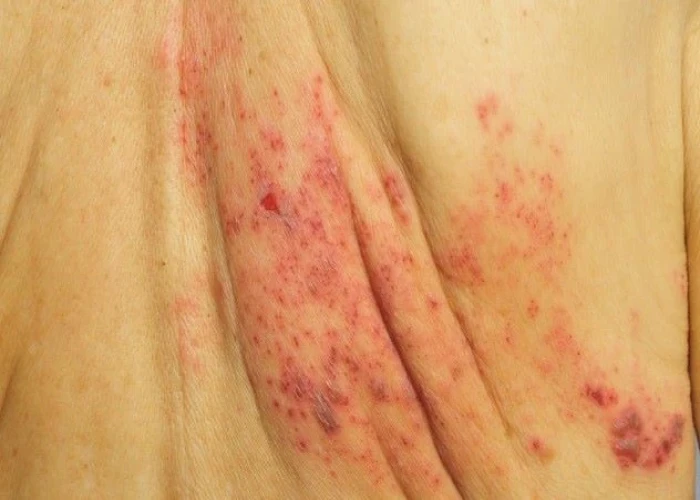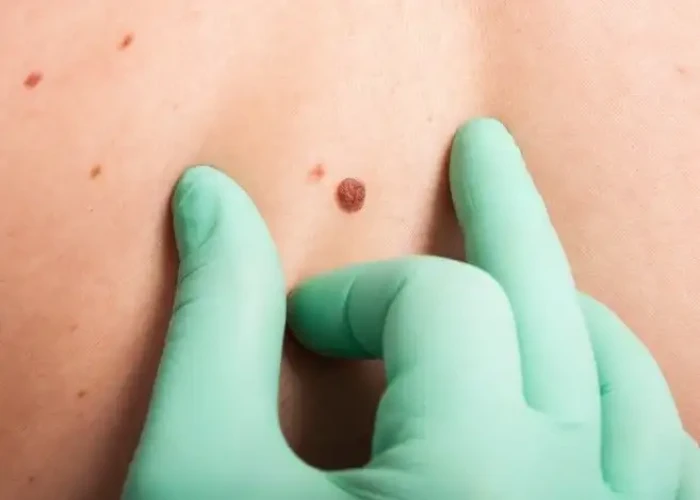 Welcome
Welcome
“May all be happy, may all be healed, may all be at peace and may no one ever suffer."
Skin cancer

Skin cancer refers to the abnormal growth of skin cells that can occur in any part of the skin. The three most common types of skin cancer are basal cell carcinoma, squamous cell carcinoma, and melanoma.
Basal cell carcinoma is the most common type of skin cancer, accounting for about 80% of all cases. It usually appears as a small, shiny bump or a patch of skin that is pink, red, or brown. It can also look like a sore that does not heal. Although it rarely spreads to other parts of the body, it can cause significant damage to the skin if left untreated.
Squamous cell carcinoma is the second most common type of skin cancer. It usually appears as a firm, red bump or a flat, scaly patch of skin that may bleed or develop a crust. It can occur anywhere on the body, but is most commonly found on areas of skin that have been exposed to the sun. It can spread to other parts of the body if left untreated.
Melanoma is the least common but most dangerous type of skin cancer. It usually appears as a dark, irregularly shaped mole or spot on the skin. It can occur anywhere on the body, including areas that are not exposed to the sun. Melanoma can spread quickly to other parts of the body and can be fatal if not treated early.
The main cause of skin cancer is exposure to ultraviolet (UV) radiation from the sun or tanning beds. Other risk factors include having fair skin, a family history of skin cancer, and having a weakened immune system. Prevention of skin cancer involves limiting exposure to UV radiation, wearing protective clothing and sunscreen, and avoiding tanning beds.
Treatment of skin cancer depends on the type and stage of the cancer. It may involve surgery to remove the cancerous cells, radiation therapy, or chemotherapy. Early detection and treatment are important for successful outcomes in skin cancer. Regular skin exams and self-examination can help detect skin cancer early.
Research Papers
Disease Signs and Symptoms
- Skin bumps
- Waxy skin
- Swollen lump or skin nodules
- Skin lesions
- Skin cancer
- A flat, flesh-colored or brown scar-like lesion
- Bleeding or scabbing sore that heals and returns
Disease Causes
Disease Prevents
Skin cancer
Most skin cancers are preventable. To protect yourself, follow these skin cancer prevention tips:
- Avoid the sun during the middle of the day. For many people in North America, the sun's rays are strongest between about 10 a.m. and 4 p.m. Schedule outdoor activities for other times of the day, even in winter or when the sky is cloudy.
- You absorb UV radiation year-round, and clouds offer little protection from damaging rays. Avoiding the sun at its strongest helps you avoid the sunburns and suntans that cause skin damage and increase your risk of developing skin cancer. Sun exposure accumulated over time also may cause skin cancer.
- Wear sunscreen year-round. Sunscreens don't filter out all harmful UV radiation, especially the radiation that can lead to melanoma. But they play a major role in an overall sun protection program.
- Use a broad-spectrum sunscreen with an SPF of at least 30, even on cloudy days. Apply sunscreen generously, and reapply every two hours — or more often if you're swimming or perspiring. Use a generous amount of sunscreen on all exposed skin, including your lips, the tips of your ears, and the backs of your hands and neck.
- Wear protective clothing. Sunscreens don't provide complete protection from UV rays. So cover your skin with dark, tightly woven clothing that covers your arms and legs, and a broad-brimmed hat, which provides more protection than a baseball cap or visor does.
- Some companies also sell photoprotective clothing. A dermatologist can recommend an appropriate brand.
- Don't forget sunglasses. Look for those that block both types of UV radiation — UVA and UVB rays.
- Avoid tanning beds. Lights used in tanning beds emit UV rays and can increase your risk of skin cancer.
- Be aware of sun-sensitizing medications. Some common prescription and over-the-counter drugs, including antibiotics, can make your skin more sensitive to sunlight.
- Ask your doctor or pharmacist about the side effects of any medications you take. If they increase your sensitivity to sunlight, take extra precautions to stay out of the sun in order to protect your skin.
- Check your skin regularly and report changes to your doctor. Examine your skin often for new skin growths or changes in existing moles, freckles, bumps and birthmarks.
- With the help of mirrors, check your face, neck, ears and scalp. Examine your chest and trunk, and the tops and undersides of your arms and hands. Examine both the front and back of your legs, and your feet, including the soles and the spaces between your toes. Also check your genital area and between your buttocks.
Disease Treatments
Your treatment options for skin cancer and the precancerous skin lesions known as actinic keratoses will vary, depending on the size, type, depth and location of the lesions. Small skin cancers limited to the surface of the skin may not require treatment beyond an initial skin biopsy that removes the entire growth.
If additional treatment is needed, options may include:
- Freezing. Your doctor may destroy actinic keratoses and some small, early skin cancers by freezing them with liquid nitrogen (cryosurgery). The dead tissue sloughs off when it thaws.
- Excisional surgery. This type of treatment may be appropriate for any type of skin cancer. Your doctor cuts out (excises) the cancerous tissue and a surrounding margin of healthy skin. A wide excision — removing extra normal skin around the tumor — may be recommended in some cases.
- Mohs surgery. This procedure is for larger, recurring or difficult-to-treat skin cancers, which may include both basal and squamous cell carcinomas. It's often used in areas where it's necessary to conserve as much skin as possible, such as on the nose.
- During Mohs surgery, your doctor removes the skin growth layer by layer, examining each layer under the microscope, until no abnormal cells remain. This procedure allows cancerous cells to be removed without taking an excessive amount of surrounding healthy skin.
- Curettage and electrodesiccation or cryotherapy. After removing most of a growth, your doctor scrapes away layers of cancer cells using a device with a circular blade (curet). An electric needle destroys any remaining cancer cells. In a variation of this procedure, liquid nitrogen can be used to freeze the base and edges of the treated area.
- These simple, quick procedures may be used to treat basal cell cancers or thin squamous cell cancers.
- Radiation therapy. Radiation therapy uses high-powered energy beams, such as X-rays, to kill cancer cells. Radiation therapy may be an option when cancer can't be completely removed during surgery.
- Chemotherapy. In chemotherapy, drugs are used to kill cancer cells. For cancers limited to the top layer of skin, creams or lotions containing anti-cancer agents may be applied directly to the skin. Systemic chemotherapy can be used to treat skin cancers that have spread to other parts of the body.
- Photodynamic therapy. This treatment destroys skin cancer cells with a combination of laser light and drugs that makes cancer cells sensitive to light.
- Biological therapy. Biological therapy uses your body's immune system to kill cancer cells.
Disease Diagnoses
Disease Allopathic Generics
Disease Ayurvedic Generics
Disease Homeopathic Generics
Disease yoga
Skin cancer and Learn More about Diseases

Liver disease

Atrioventricular canal defect

Sty

Acoustic neuroma

Ice cream headaches

Postherpetic neuralgia

Vaginal atrophy

Alcohol intolerance
skin cancer, ত্বক ক্যান্সার
To be happy, beautiful, healthy, wealthy, hale and long-lived stay with DM3S.
